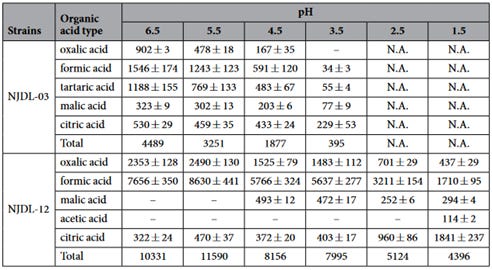Oxalic Acid and Tartaric Acid Production from Aspergillus niger and Penicillium oxalicum
Potential toxic organic acid compounds produced by fungus, including from digestive colonization - Medical Academy of Pediatric Special Needs (MAPS) Fall 2024 lecture - Part 2.
The Scientific Reports paper published April 2016 from Z. Li, et. al. details the production of various organic acid compounds from two common fungal organisms. Both aspergillus spp. and penicillium spp. molds are known contaminates of water-damaged building material, soil, and foods. In addition, fungal colonization within the digestive system (as well as the lungs and sinuses) is known to occur from individuals exposed to certain environmental mold.
Various organic acid compounds such as oxalic acid and tartaric acid can have deleterious influences within host biochemistry leading to multiple cellular function abnormalities such as Krebs cycle interference, mitochondrial dysfunction, and mineral sequestration (generally linked to oxalic acid). High levels of oxalic acid can cause calcium oxalate crystal formation which triggers pain and inflammation in soft tissues and joints. A major long-term negative consequence of elevated oxalic acid is kidney stones.
Image 1 shows two fungal species NJDL-03 (Penicillium oxalicum) and NJDL-12 (Aspergillus niger). Both produce oxalic acid in high amounts (and other organic acids) with P. oxalicum producing tartaric acid.
Image 1 - both Aspergillus niger and P. oxalicum produce oxalic acid and other organic acid compounds, e.g., malic acid, citric acid.
A research paper published in 2014 (below) in Fungal Biology and Biotechnology showed similar information with Aspergillus niger producing various organic acids, including oxalic acid, lactic acid, citric acid, and tartaric acid. Image 2 shows the organic acids produced from the highest amount to lowest amount in descending order. Note that there are multiple fungal species indentified, but the main organism is A. niger.
Image 2 - various organic acids compounds get produced by Aspergillus niger and a few other fungal species. Notice that ethanol is highly produced which is consistent with fungal metabolism of glucose. Oxalic is produced in high amounts. Tartaric is produced in lower amounts.
Fungal organisms such as aspergillus (A. niger) and penicillium (P. oxalicum) are known producers of organic acid compounds. Some of these compounds can be detected on an organic acids test (OAT), and this profile is often used in assessing for fungal overgrowth, i.e., candida, fungus (aspergillus, fusarium), yeast felt most commonly to be originating from the digestive system. Tartaric acid has been recognized to be associated with aspergillus colonization, but it is certainly possible that penicillium colonization may be occuring too or in place of aspergillus. Both of these fungal organisms are known to co-exist in certain environment niches.
The most striking organic acid identified that tends to have high clinical significance is oxalic acid. This compound is often found elevated on OATs and is usually suspected to be associated with dietary consumption of high oxalic acid containing foods. However, in light of these papers (and others) oxalic acid is now being viewed more strongly as a potential indicator of fungal (e.g., aspergillus) colonization.
The two images below are from a Mosaic Diagnostics Laboratory OAT. The first image shows yeast and fungal markers, including tartaric acid. The second image shows high oxalic acid. This OAT pattern is highly suspicious of aspergillus (and possibly penicillium) mold colonization.









